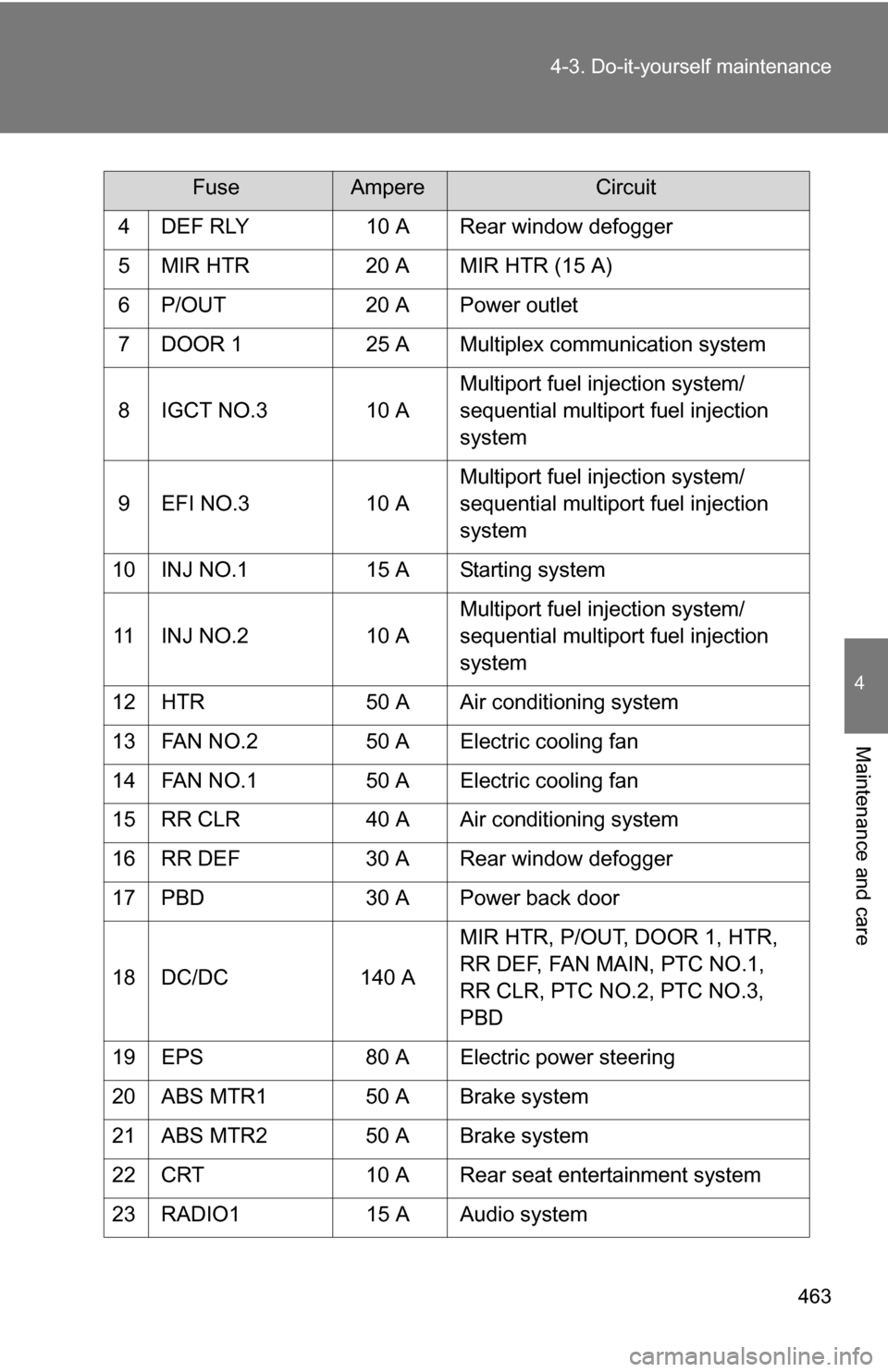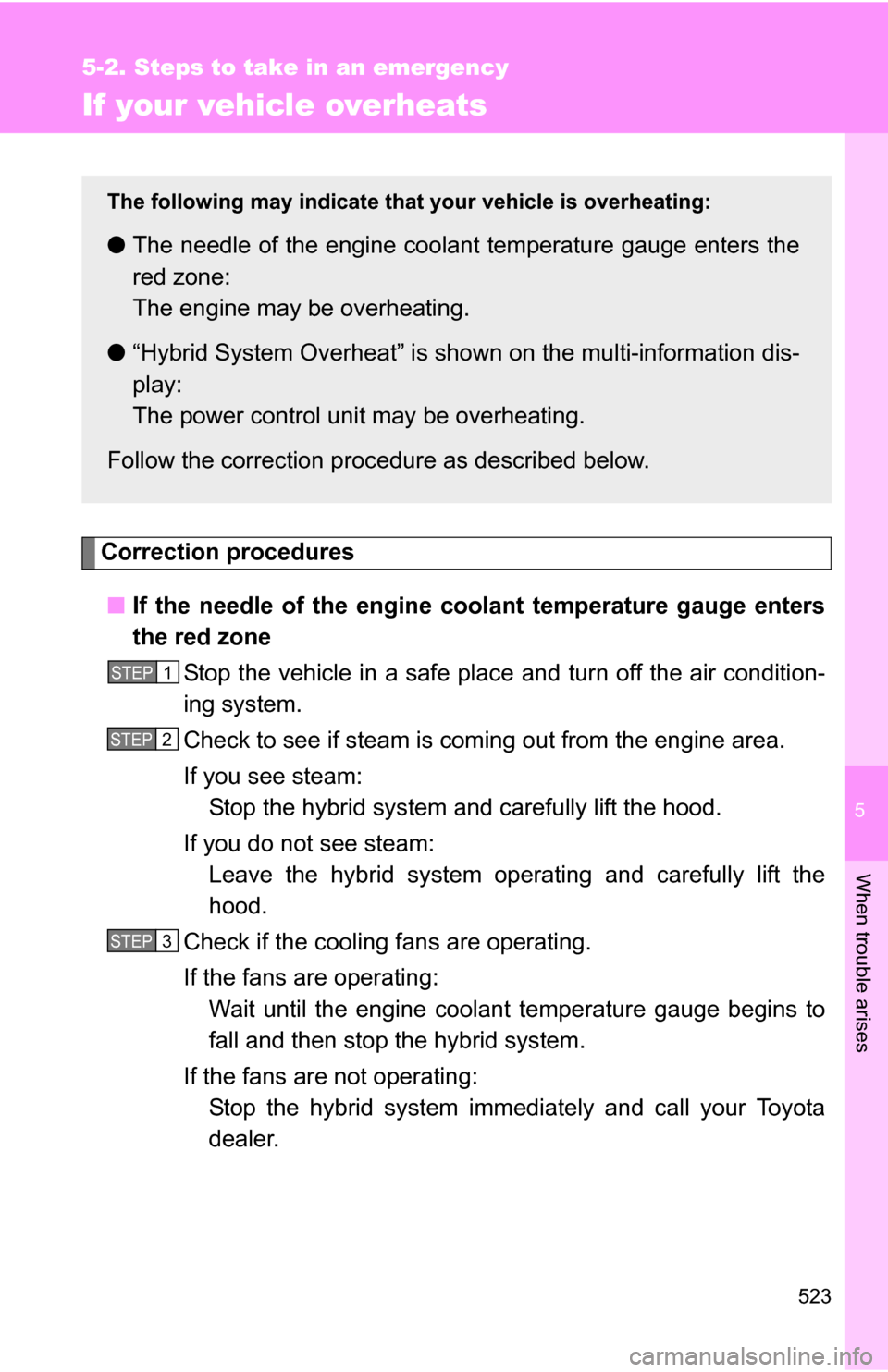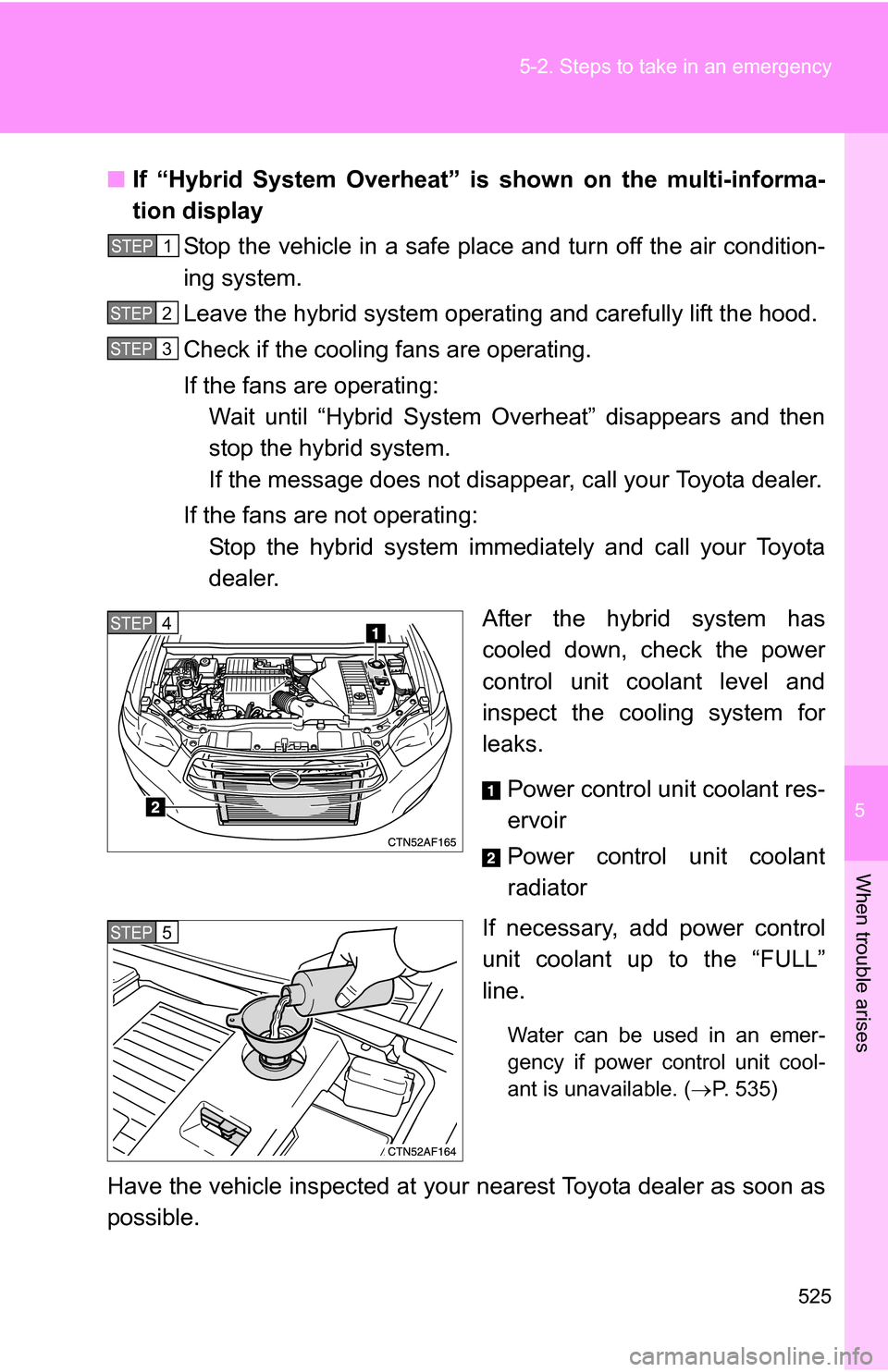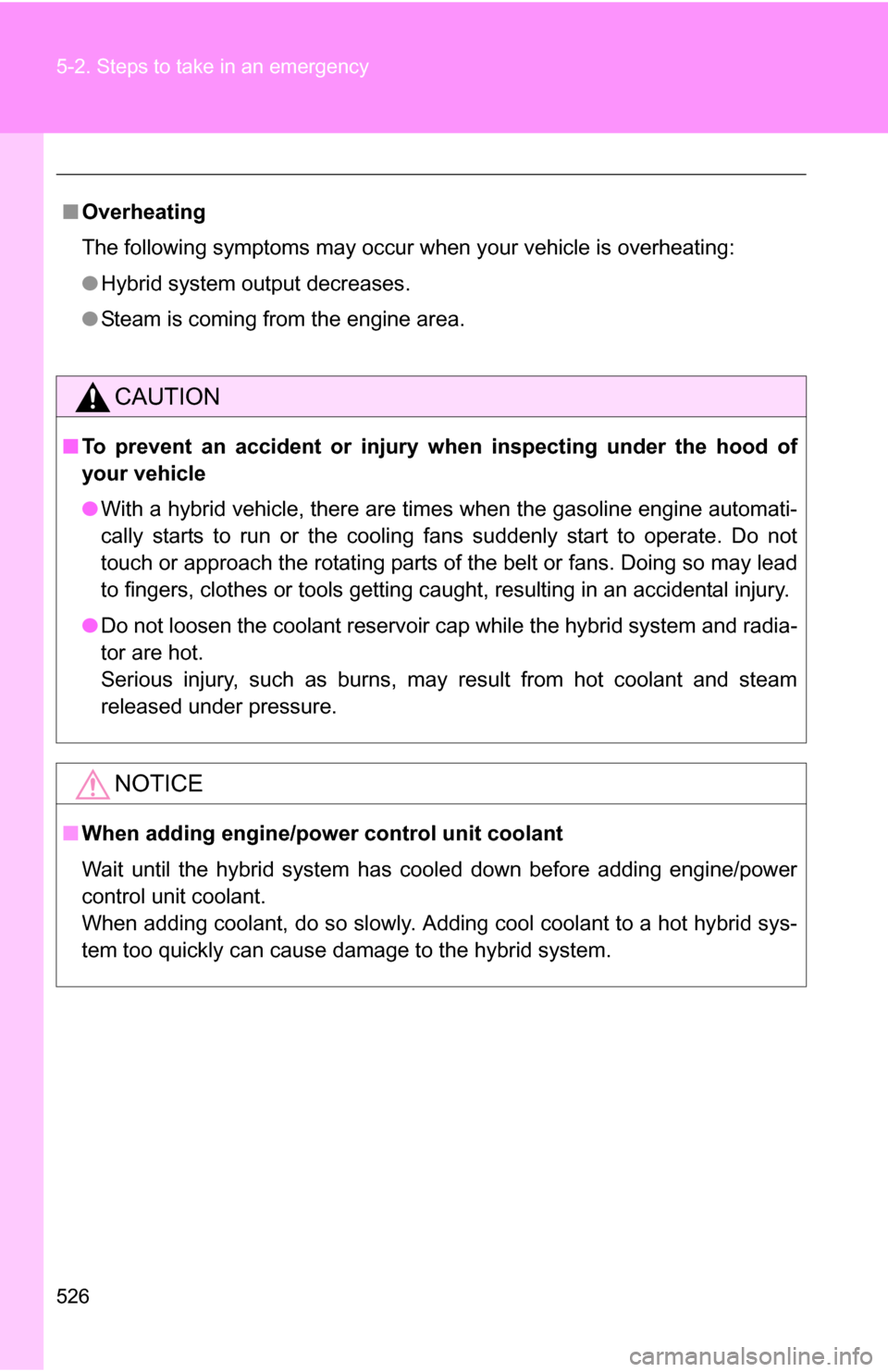Page 463 of 580

463
4-3. Do-it-yourself maintenance
4
Maintenance and care
4 DEF RLY
10 A Rear window defogger
5 MIR HTR 20 A MIR HTR (15 A)
6 P/OUT 20 A Power outlet
7 DOOR 1 25 A Multiplex communication system
8 IGCT NO.3 10 A Multiport fuel injection system/
sequential multiport fuel injection
system
9 EFI NO.3 10 AMultiport fuel injection system/
sequential multiport fuel injection
system
10 INJ NO.1 15 A Starting system
11 INJ NO.2 10 AMultiport fuel injection system/
sequential multiport fuel injection
system
12 HTR 50 A Air conditioning system
13 FAN NO.2 50 A Electric cooling fan
14 FAN NO.1 50 A Electric cooling fan
15 RR CLR 40 A Air conditioning system
16 RR DEF 30 A Rear window defogger
17 PBD 30 A Power back door
18 DC/DC 140 AMIR HTR, P/OUT, DOOR 1, HTR,
RR DEF, FAN MAIN, PTC NO.1,
RR CLR, PTC NO.2, PTC NO.3,
PBD
19 EPS 80 A Electric power steering
20 ABS MTR1 50 A Brake system
21 ABS MTR2 50 A Brake system
22 CRT 10 A Rear seat entertainment system
23 RADIO1 15 A Audio system
FuseAmpereCircuit
Page 464 of 580

464 4-3. Do-it-yourself maintenance
24 ECU-B10 ASteering sensor, gauges and
meters, air conditioning system,
main body ECU, wireless remote
control, smart key system, power
back door, on-board diagnosis sys-
tem
25 DOME 10 AVanity lights, personal lights, inte-
rior light, gauges and meters, door
courtesy lights, power back door
26 AMP 15 A Audio system
27 TOWING 30 A Trailer lights
28 IG2 25 A INJ NO.1, INJ NO.2
29 STR LOCK 20 A Steering lock system
30 IGCT 30 AIGCT No.2, IGCT No.3, INV-W/P,
EFI NO.3
31 HAZ 15 A Turn signal lights
32 ABS NO.3 15 AElectronically controlled brake sys-
tem
33 ABS NO.2 10 AElectronically controlled brake sys-
tem
34 ABS NO.1 10 A Capacitor
35 OIL PMP 10 A Transaxle fluid cooling system
36 BATT FAN 15 A Hybrid system
37 G/H 10 AGlass hatch, multiplex communica-
tion system
38 DC/DC-S 10 A Hybrid system
39 AM2 7.5 A Multiplex communication system
40 H-LP LH 15 A Left-hand headlight (high beam)
41 H-LP RH 15 A Right-hand headlight (high beam)
42 H-LP LL 15 A Left-hand headlight (low beam)
FuseAmpereCircuit
Page 522 of 580
522 5-2. Steps to take in an emergency
NOTICE
■To prevent damaging the vehicle
Do not pull- or push-start the vehicle. This may cause serious damage to the
hybrid system.
■ When handling jumper cables
Be careful that the jumper cables do not become tangled in the cooling fans
or belt when connecting or disconnecting the cables.
Page 523 of 580

5
When trouble arises
523
5-2. Steps to take in an emergency
If your vehicle overheats
Correction procedures■ If the needle of the engine coolant temperature gauge enters
the red zone
Stop the vehicle in a safe place and turn off the air condition-
ing system.
Check to see if steam is coming out from the engine area.
If you see steam:
Stop the hybrid system and carefully lift the hood.
If you do not see steam: Leave the hybrid system operating and carefully lift the
hood.
Check if the cooling fans are operating.
If the fans are operating: Wait until the engine coolant temperature gauge begins to
fall and then stop the hybrid system.
If the fans are not operating: Stop the hybrid system immediately and call your Toyota
dealer.
The following may indicate that your vehicle is overheating:
●The needle of the engine coolant temperature gauge enters the
red zone:
The engine may be overheating.
● “Hybrid System Overheat” is shown on the multi-information dis-
play:
The power control unit may be overheating.
Follow the correction procedure as described below.
STEP1
STEP2
STEP3
Page 524 of 580
524 5-2. Steps to take in an emergency
After the hybrid system has
cooled down, check the engine
coolant level and inspect the
cooling system for leaks.Engine coolant reservoir
Radiator
If necessary, add engine coolant
up to the “FULL” line.
Water can be used in an emer-
gency if engine coolant is unavail-
able. ( P. 535)
STEP4
STEP5
Page 525 of 580

5
When trouble arises
525
5-2. Steps to take in an emergency
■
If “Hybrid System Overheat” is shown on the multi-informa-
tion display
Stop the vehicle in a safe place and turn off the air condition-
ing system.
Leave the hybrid system operating and carefully lift the hood.
Check if the cooling fans are operating.
If the fans are operating: Wait until “Hybrid System Overheat” disappears and then
stop the hybrid system.
If the message does not disappe ar, call your Toyota dealer.
If the fans are not operating: Stop the hybrid system immediately and call your Toyota
dealer.
After the hybrid system has
cooled down, check the power
control unit coolant level and
inspect the cooling system for
leaks.
Power control unit coolant res-
ervoir
Power control unit coolant
radiator
If necessary, add power control
unit coolant up to the “FULL”
line.
Water can be used in an emer-
gency if power control unit cool-
ant is unavailable. ( P. 535)
Have the vehicle inspected at your nearest Toyota dealer as soon as
possible.
STEP1
STEP2
STEP3
STEP4
STEP5
Page 526 of 580

526 5-2. Steps to take in an emergency
■Overheating
The following symptoms may occur when your vehicle is overheating:
●Hybrid system output decreases.
● Steam is coming from the engine area.
CAUTION
■To prevent an accident or injury when inspecting under the hood of
your vehicle
● With a hybrid vehicle, there are times when the gasoline engine automati-
cally starts to run or the cooling fans suddenly start to operate. Do not
touch or approach the rotating parts of the belt or fans. Doing so may lead
to fingers, clothes or tools getting caught, resulting in an accidental injury.
● Do not loosen the coolant reservoir cap while the hybrid system and radia-
tor are hot.
Serious injury, such as burns, may result from hot coolant and steam
released under pressure.
NOTICE
■When adding engine/power control unit coolant
Wait until the hybrid system has cooled down before adding engine/power
control unit coolant.
When adding coolant, do so slowly. Adding cool coolant to a hot hybrid sys-
tem too quickly can cause damage to the hybrid system.
Page 535 of 580
535
6-1. Specifications
6
Vehicle specifications
Cooling system
Capacity (Reference)
Gasoline engine
Power control unit Without rear air conditioning system
11.2 qt. (10.6 L, 9.3 Imp.qt.)
With rear air conditioning system
13.5 qt. (12.8 L, 11.3 Imp.qt.)
3.6 qt. (3.4 L, 3.0 Imp.qt.)
Coolant type Use either of the following.
• “Toyota Super Long Life Coolant”
• Similar high-quality ethylene glycol-based non-silicate, non-amine, non-nitrite, and
non-borate coolant with long-life hybrid
organic acid technology
Do not use plain water alone.